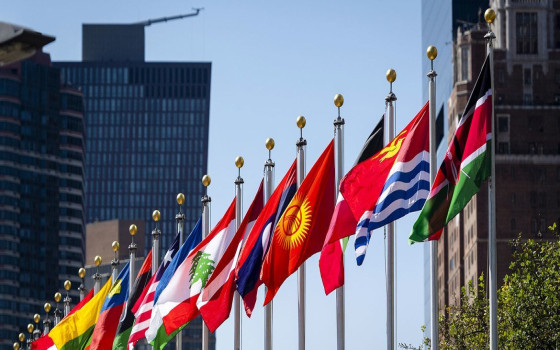
The most important events of the past year and the United Nations’ response to them: earthquakes in Syria, Turkey, and Morocco, the war in Sudan and Gaza, COP 28, and the sustainable development goals.

- Europe and Arabs
- Sunday , 31 December 2023 15:52 PM GMT
Brussels - New York: Europe and the Arabs
The work of the United Nations remained critical and life-saving during the year 2023, which was marred by many humanitarian crises driven by conflicts, natural disasters, and the devastating effects of climate change.
Regarding the most prominent events witnessed in 2023, we begin with the twenty-eighth Conference of the Parties on Climate Change (COP28), which was held in Dubai in December. Prior to the conference, Secretary-General António Guterres visited areas witnessing melting glaciers in Antarctica with the aim of highlighting the effects of global warming on rapidly melting glaciers and continental ice slopes. According to the publication of the United Nations daily news website
Speaking to reporters in New York before traveling to Dubai for the conference, Mr Guterres said: “We are trapped in a deadly cycle. The ice reflects the sun’s rays. As the ice disappears, more heat is absorbed into the Earth’s atmosphere. This means more heat, which means "More storms, floods, fires, droughts around the world and more melting. Which means more heating. This devastation is a direct result of our addiction to fossil fuels." He stressed the need to break this deadly cycle during the United Nations Climate Change Conference.
The average thickness of the world's glaciers has decreased by about 30 meters since 1970, and irreversible changes in the global cryosphere will affect more than a billion people who depend on water from snow and melting glaciers, according to the World Meteorological Organization. Antarctic sea ice is at an all-time low. New figures show that last September, it was 1.5 million square kilometers below average for this time of year – an area the size of Portugal, Spain, France and Germany combined.
Speaking at the World Climate Action Summit held within the activities of the Dubai Climate Conference, the Secretary-General addressed business leaders directly, calling on them to lead the shift towards renewable energy sources using available resources, stressing that the path to climate sustainability is also the only viable path to achieving The economic sustainability of their companies in the future.
Young advocates participating in the climate conference reviewed the devastating effects of climate disruption on their communities. Among them was young Senegalese rapper Omi Gaye, who goes by the alias OMG and is collaborating with the Office for the Coordination of Humanitarian Affairs (OCHA) to advocate for humanitarian issues in the Sahel region – one of the fastest growing humanitarian emergencies in the world.
She said: “We hope to find sustainable solutions, solutions that can help each of us reduce the negative impact of climate change in all areas, especially in the Sahel region where I live, which is the most affected.”
COP28 concluded with an agreement that signals “the beginning of the end” of the fossil fuel era by paving the way for a rapid, fair and equitable transition, supported by significant emissions reductions and increased funding for clean energy programmes.
Sustainable Development Goals Summit
September witnessed the holding of the 2023 Sustainable Development Goals Summit, coinciding with the start of the General Assembly High-Level Week in New York. The summit represented the halfway point towards the deadline set for achieving the Sustainable Development Goals by 2030.
The Summit provided a platform for young people - who continue to be disproportionately affected by current global crises - to make their voices heard. “It is very clear that the age of fossil fuels is coming to an end,” said Aisha Siddiqui, a Pakistani-American climate justice advocate. “You are either on the right side of history or you are on the wrong side.”
“We are seeing more Category 4 or 5 hurricanes that used to happen once in a generation,” said Vishal Prasad, who represented a Pacific Island student organization fighting climate change. “They are now happening almost annually. Hurricanes are wiping out decades of development gains and People's livelihood.
Honoring the winners of the Human Rights Award
In December, the United Nations Human Rights Prize was formally awarded in the General Assembly to five individuals and organizations in recognition of their outstanding achievements in the field of human rights. The Prize was established by the General Assembly in 1966, and was first awarded on 10 December 1968 in conjunction with the twentieth anniversary of the Universal Declaration of Human Rights.
Among the award winners is the Amman Center for Human Rights Studies in Jordan. Director of the Amman Center for Human Rights Studies, Dr. Nizam Assaf, said in an interview with UN News that winning the UN award represents “a new birth for the centre.” Also among the winners is Julianne Losing, from the Democratic Republic of the Congo, for her work advocating for survivors of wartime sexual violence.
When accepting the award, Losing said: “Our organization is keen to provide medical and psychological services and even social and economic reintegration not only to victims of war, but also to victims of sexual violence.” She stressed the need to "restore peace" in the Democratic Republic of the Congo, stressing that "without peace there are no rights."
The war in Gaza
The Security Council's adoption of a humanitarian resolution on 22 December was a ray of hope in the midst of the conflict in Gaza. Among other things, the resolution - adopted by 13 votes in favor, with the United States and Russia abstaining - demands the immediate, safe, unhindered and widespread delivery of humanitarian assistance directly to the Palestinian civilian population throughout the Gaza Strip.
Israeli bombardments from the air, land and sea across Gaza, which followed the Hamas attack on October 7, have caused an unprecedented humanitarian catastrophe in Gaza. The World Food Program warned of looming famine, as all Gazans surveyed often eat no food.
Gaza already experiences high rates of infectious diseases. More than 100,000 cases of diarrhea have been reported since mid-October and half of these are young children under 5 years old, a number 25 times higher than what was reported before the conflict.
According to the World Health Organization, only 9 health facilities out of 36 are partially functioning in the entire Gaza Strip, all of which are in the south. There are no longer functioning hospitals in the north. These hospitals are still housing thousands of displaced people.
It is estimated that at least 20,000 people died due to the bombing.
Addressing the Council in November, UN Secretary-General António Guterres said: “Civilians – including UN personnel – must be protected. Civilian objects – including hospitals – must be protected. UN facilities must not be attacked. Humanitarian law must be respected.” international law by all parties to the conflict at all times.”
Speaking from Gaza, UNICEF spokesman James Elder highlighted the plight of boys and girls with “horrific shrapnel wounds and burns” in hospital emergency departments.
James Elder said: “There are children in parking lots, in parks, and on beds everywhere. There are hundreds of thousands of children who are not in school, who live in very crowded camps, and who feel the cold accompanied by the rain. They do not have enough food and water.” "And now they are at risk of an outbreak. It's a terrible situation."
The war in Sudan
The outbreak of fighting between the armed forces and the Rapid Support Forces on April 15 caused a major humanitarian catastrophe, as the fighting forced thousands of civilians to be displaced and take refuge within Sudan and to neighboring countries, especially Chad, South Sudan and Egypt. A senior UN official said that the outbreak of conflict in Sudan caused a combination of "a worsening humanitarian catastrophe and a catastrophic human rights crisis."
In Darfur, about nine million people need humanitarian assistance, and reports indicate that about 4,000 people have been targeted and killed because of their tribal affiliation. There are now fears that Darfur could return to the cycle of brutal fighting and increasing atrocities that it last witnessed twenty years ago, which caused the deaths of about 300,000 people and the displacement of millions of others.
Upon her arrival in the Chadian town of Adre, located on the border with Sudan, 23-year-old Hoda Hamza said: “They attacked us in the morning. They attacked us while we were walking on the road and took everything from us, money, clothes, food. They killed our relatives and friends. It was a difficult moment.”
Sudan is currently one of the most difficult places in the world for humanitarian workers. It is estimated that nearly 25 million people will need humanitarian relief in 2024, most of them in hot conflict areas – including Khartoum, Darfur and Kordofan – that are difficult for aid agencies to reach.
Earthquakes in Syria, Turkey, Morocco and Afghanistan
On February 6, a 7.8-magnitude earthquake struck southern and central Turkey and northern and western Syria, killing nearly 60,000 people. “It will take a long time to help these people return to their normal lives,” said UN High Commissioner for Refugees Filippo Grandi, during his visit to Jableh in Syria.
In September, an earthquake struck Morocco, killing and injuring thousands, most of them in the Al Haouz province and the city of Taroudant, according to data from the Moroccan national authorities.
In October, Afghanistan was hit by a series of devastating earthquakes that destroyed entire villages in the west of the country and affected nearly 160,000 people who currently need urgent assistance to survive the winter.
At least 1,400 people were killed, and many more were injured. More than 20 thousand homes were reduced to rubble. The earthquakes struck already vulnerable communities, who were barely able to earn a living, worsening their misery and their ability to support themselves.
Tawakkul, a villager from Shahak in Injil district in western Afghanistan, said: “This is all I have. I had rice, wheat and food, and everything I have is buried under the rubble, and I have no food for my children. I have no mattresses or carpets for my children to sit on and eat. "What we had is buried here."
Flood disaster in Derna
We conclude our summary with the flood disaster in Libya. In September, two dams collapsed in the coastal city of Derna in Libya, killing and displacing thousands. “The situation is horrific,” said Rana Qasifi, from the United Nations High Commissioner for Refugees. “I cannot explain what I saw on my way to Derna. I saw the roads split in half. I saw huge boulders moving from the nearby mountains to the coastal areas. Houses were demolished and flooded.” "Families lost a large number of their loved ones. Many of them are still missing. Some have been separated and others have been displaced."
In Ukraine, at least 2,200 people were forced to leave their homes in Ukrainian-controlled areas of Khersonska Oblast due to the destruction of the Kakhovka Dam in June, causing widespread flooding downstream.
The Humanitarian Coordinator for Ukraine, Denise Brown, visited the city of Belozerka, where the Office for the Coordination of Humanitarian Affairs (OCHA) delivered 5 trucks of aid to one of the communities most affected by the floods. “This community has been bombed,” Brown said. “And now it has been severely affected by the floods caused by the destruction of the dam due to the war. It is an unbearable level of suffering. But we are here to support.”


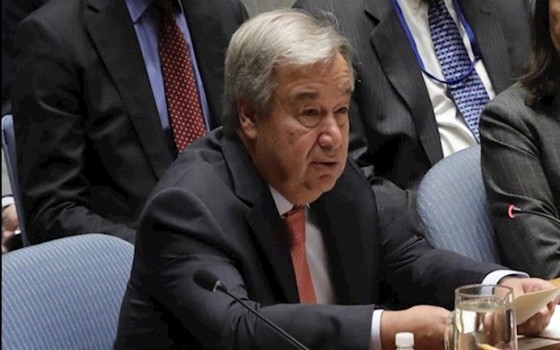



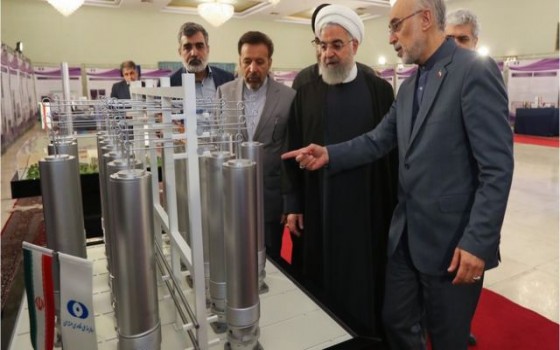
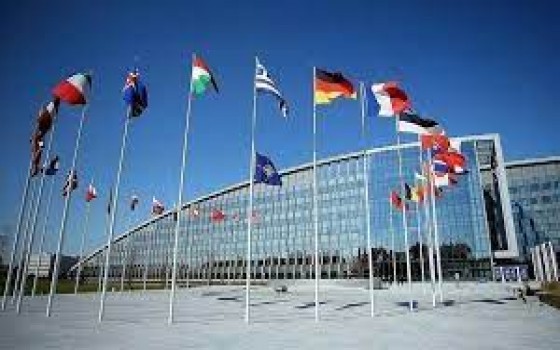

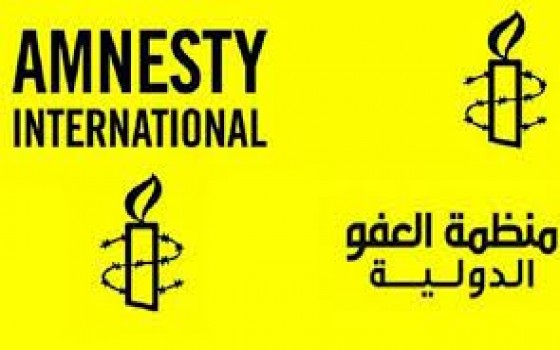
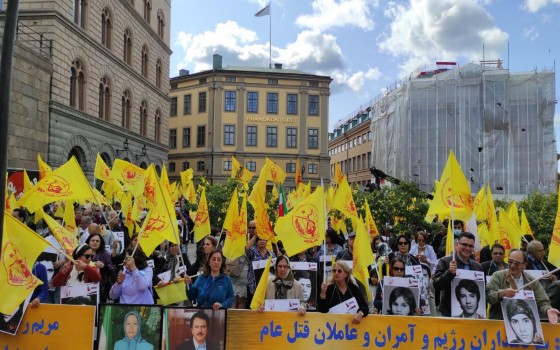

No Comments Found